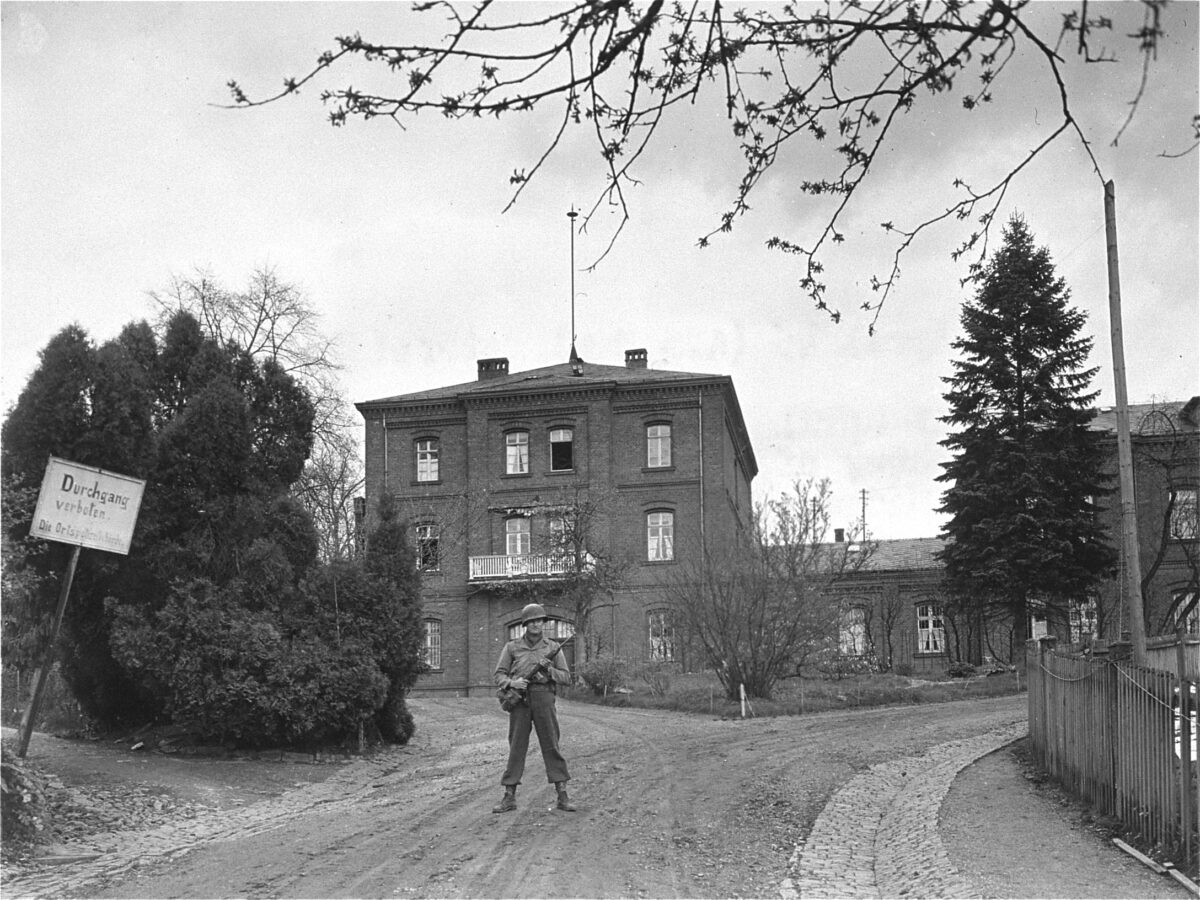On 26 March 1945, US Army units reached the town of Hadamar on their way to Central Germany. They liberated the town and the institution from National Socialism and ended the murder of the ill that over 15,000 patients had fallen victim to during the “T4” programme and the subsequent „decentralised euthanasia“.

When American soldiers arrived at the institution, they came upon catastrophic conditions. Over 500 patients were starved and weakened by systematic neglect and targeted malnutrition. Although the US Army provided medical care and additional rations to the patients, for many, help came too late. Several of them died in the days and weeks following liberation as a result of inadequate care.
At the time of liberation, the building, the hospital wards and the equipment were run down due to Nazi institutional policy and in part no longer usable. Beds were provided again in gradual steps.
The obvious traces left by the murder of the ill led to the first US Army investigation that began immediately after liberation. The key members of hospital management that were still on site were taken into custody and interrogated. Witnesses were also questioned about the murders and evidence was seized. The US Army also conducted investigations into the institutional cemetery where the murdered patients had been buried in mass graves beginning in 1942. Under the supervision of a US pathologist, several bodies were exhumed and examined by forensic experts. The evidence gathered during the investigation led to a first trial in October 1945. It was conducted in a US military court in Wiesbaden against the staff members that undertook the killings.
Hadamar was one of the first major murder sites to be liberated by the US Army. Those that survived the murder of the ill, the survivors’ physical conditions, the institution, the traces of the crimes, the killing staff and the investigative work itself were recorded in photographs and on film. Producing these images served to secure evidence and provide reporting. . It was as early as April 1945 that English-language newspaper articles and weekly newsreels began reporting about the Hadamar killing centre. As a result, the images spread around the world and Hadamar became a symbol of Nazi “euthanasia” crimes.
Literature: Georg Lilienthal, „Die Erbschaft, die ich antrat, war sehr unerfreulich“. Hadamar nach dem Krankenmord, in: Christine Wolters, Christof Beyer, Brigitte Lohff (ed.), Abweichung und Normalität. Psychiatrie in Deutschland vom Kaiserreich bis zur Deutschen Einheit, Bielefeld 2013, p. 199–218.
